-
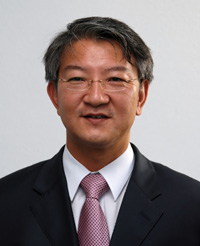 KAIST, GS Caltex Jointly Develop New Bacteria to Produce Biobutanol
KAIST and GS Caltex, Korea"s second-largest refiner, have jointly developed a new strain of bacteria to produce biobutanol, which is regarded as a promising next-generation biofuel, KAIST authorities said on Monday (June 2).
A research team led by Prof. Sang-Yup Lee of the Chemical and Biomolecular Engineering Department and researchers of GS Caltex succeeded in developing an improved strain of bacteria which enables to produce a large amount of biobutanol in the process of fermenting biomass. The research team has applied for international patent for the new technology.
Biomass refers to living and recently dead biological material that can be used as fuel or for industrial production. It usually refers to plant matter grown for use as biofuel, but it also includes plant or animal matter used for production of fibers, chemicals or heat.
In the 1970s and 1980s when scientists began researching the possibilities of alternative fuels, bacteria were used in the process of fermenting biomass. This ABE (acetone, butanol, ethanol) fermentation process yields butanol, acetone, and ethanol in a ratio of 6:3:1, respectively. Acetone produced in this process is not usable.
The newly developed technology to produce biobutanol has an advantage of lowering production cost by eliminating the process to separate acetone from butanol. This has been made possible by improving the bacteria used for the fermentation in metabolic engineering terms, and producing butanol and ethanol only in a ratio of 6:1, while curbing the generation of acetone.
In comparison with bioethanol, also a biofuel mixture which is currently under widespread use in some countries, butanol is more easily transported with gasoline and diesel through pipelines because of its lower tendency to separate from the fuel when contaminated with water. Butanol is also less corrosive than ethanol, another reason its transport through pipeline is preferable.
Global interest in full utilization of biomass and development of other alternative energy including biobutanol has deepened in recent years, as crude oil prices have skyrocketed to record levels and climate changes resulting from the excessive use of fossil fuel have been causing various problems around the world.
2008.06.04 View 11783
KAIST, GS Caltex Jointly Develop New Bacteria to Produce Biobutanol
KAIST and GS Caltex, Korea"s second-largest refiner, have jointly developed a new strain of bacteria to produce biobutanol, which is regarded as a promising next-generation biofuel, KAIST authorities said on Monday (June 2).
A research team led by Prof. Sang-Yup Lee of the Chemical and Biomolecular Engineering Department and researchers of GS Caltex succeeded in developing an improved strain of bacteria which enables to produce a large amount of biobutanol in the process of fermenting biomass. The research team has applied for international patent for the new technology.
Biomass refers to living and recently dead biological material that can be used as fuel or for industrial production. It usually refers to plant matter grown for use as biofuel, but it also includes plant or animal matter used for production of fibers, chemicals or heat.
In the 1970s and 1980s when scientists began researching the possibilities of alternative fuels, bacteria were used in the process of fermenting biomass. This ABE (acetone, butanol, ethanol) fermentation process yields butanol, acetone, and ethanol in a ratio of 6:3:1, respectively. Acetone produced in this process is not usable.
The newly developed technology to produce biobutanol has an advantage of lowering production cost by eliminating the process to separate acetone from butanol. This has been made possible by improving the bacteria used for the fermentation in metabolic engineering terms, and producing butanol and ethanol only in a ratio of 6:1, while curbing the generation of acetone.
In comparison with bioethanol, also a biofuel mixture which is currently under widespread use in some countries, butanol is more easily transported with gasoline and diesel through pipelines because of its lower tendency to separate from the fuel when contaminated with water. Butanol is also less corrosive than ethanol, another reason its transport through pipeline is preferable.
Global interest in full utilization of biomass and development of other alternative energy including biobutanol has deepened in recent years, as crude oil prices have skyrocketed to record levels and climate changes resulting from the excessive use of fossil fuel have been causing various problems around the world.
2008.06.04 View 11783 -
 KAIST, ICU Agree to Merge
KAIST and the Information and Communications University, a state-run institution, decided to merge as they signed a memorandum of understanding for unification at the Westin Chosun Hotel in Seoul on May 23.
The MOU signing ceremony was attended by representatives of the two universities and related high-ranking government officials from the Ministry of Knowledge Economy and the Ministry of Education, Science and Technology.
Under the agreement, the two universities will form a joint committee to complete the merger process by the end of this year. According to the MOU, ICU will become the "IT Convergence Campus" (ICC) which will include KAIST"s IT related departments and research institutes. The projected ICC will be headed by a KAIST vice president, KAIST authorities said.
With the merger, the number of KAIST students in the IT area will increase to 2,850 from 1,951, while the number of IT-related faculty members will rise to 157 from 99.
ICU was established in 1997 by the Korean Ministry of Information and Communication, the Electronics and Telecommunications Research Institute, and some major Korean IT companies. Located in Daedeok Science Town in Daejeon where KAIST is also situated, ICU started as a graduate school and added the undergraduate course in 2002. It currently has a total enrollment of 1,121 students -- 481undergraduate students, 324 graduate students and 316 doctorate students.
KAIST said that it will treat ICU professors and staff equally after the merger. This year, the two universities will separately conduct freshmen recruitment procedures for 2009, but will then unify recruitment.
The unification of the two institutions is expected to give KAIST the competitive edge through a larger faculty, student body, and expanded facilities.
The agreement put an end to extended negotiations for merger which started in July 2006. The talk of merging the two universities surfaced when the Board of Audit and Inspection concluded that the government"s direct financial support for ICU was unlawful as ICU was established as a private school. When ICU was established in 1997, the Ministry of Information and Communication provided 200 billion won as the basic endowment and has continually provided 10 billion won in operating funds each year.
2008.05.22 View 13444
KAIST, ICU Agree to Merge
KAIST and the Information and Communications University, a state-run institution, decided to merge as they signed a memorandum of understanding for unification at the Westin Chosun Hotel in Seoul on May 23.
The MOU signing ceremony was attended by representatives of the two universities and related high-ranking government officials from the Ministry of Knowledge Economy and the Ministry of Education, Science and Technology.
Under the agreement, the two universities will form a joint committee to complete the merger process by the end of this year. According to the MOU, ICU will become the "IT Convergence Campus" (ICC) which will include KAIST"s IT related departments and research institutes. The projected ICC will be headed by a KAIST vice president, KAIST authorities said.
With the merger, the number of KAIST students in the IT area will increase to 2,850 from 1,951, while the number of IT-related faculty members will rise to 157 from 99.
ICU was established in 1997 by the Korean Ministry of Information and Communication, the Electronics and Telecommunications Research Institute, and some major Korean IT companies. Located in Daedeok Science Town in Daejeon where KAIST is also situated, ICU started as a graduate school and added the undergraduate course in 2002. It currently has a total enrollment of 1,121 students -- 481undergraduate students, 324 graduate students and 316 doctorate students.
KAIST said that it will treat ICU professors and staff equally after the merger. This year, the two universities will separately conduct freshmen recruitment procedures for 2009, but will then unify recruitment.
The unification of the two institutions is expected to give KAIST the competitive edge through a larger faculty, student body, and expanded facilities.
The agreement put an end to extended negotiations for merger which started in July 2006. The talk of merging the two universities surfaced when the Board of Audit and Inspection concluded that the government"s direct financial support for ICU was unlawful as ICU was established as a private school. When ICU was established in 1997, the Ministry of Information and Communication provided 200 billion won as the basic endowment and has continually provided 10 billion won in operating funds each year.
2008.05.22 View 13444 -
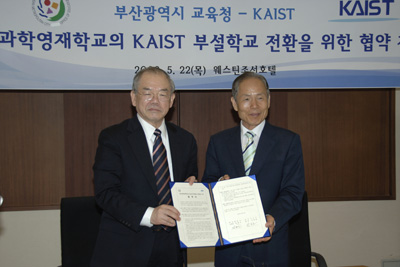 Korea Science Academy to Be Affiliated with KAIST
The Korea Science Academy, a state-run science high school located in the southeastern port city of Busan, will be converted to an affiliated school of KAIST as of March 1, 2009, university authorities said on Thursday (May 22).
The memorandum of understanding for the switchover was signed by KAIST President Nam-Pyo Suh, Dong-Geun Seol, superintendent of the Busan Metropolitan City and Jang-Hyuk Kwon, principal of the Korea Science Academy, at Seoul"s Westin Chosun Hotel Thursday morning.
When the switchover comes into effect, the principal of the high school will be appointed by the president of KAIST. Administrative details will be decided by a working-level committee consisting of delegates from the KAIST, the Office of Education of the Busan Metropolitan City and the Korea Science Academy.
The Korea Science Academy was established in 1991 to provide strengthened science courses for gifted students to prepare them for careers in science and technology. The school currently has an enrollment of 428 students and 45 classroom teachers.
2008.05.22 View 12839
Korea Science Academy to Be Affiliated with KAIST
The Korea Science Academy, a state-run science high school located in the southeastern port city of Busan, will be converted to an affiliated school of KAIST as of March 1, 2009, university authorities said on Thursday (May 22).
The memorandum of understanding for the switchover was signed by KAIST President Nam-Pyo Suh, Dong-Geun Seol, superintendent of the Busan Metropolitan City and Jang-Hyuk Kwon, principal of the Korea Science Academy, at Seoul"s Westin Chosun Hotel Thursday morning.
When the switchover comes into effect, the principal of the high school will be appointed by the president of KAIST. Administrative details will be decided by a working-level committee consisting of delegates from the KAIST, the Office of Education of the Busan Metropolitan City and the Korea Science Academy.
The Korea Science Academy was established in 1991 to provide strengthened science courses for gifted students to prepare them for careers in science and technology. The school currently has an enrollment of 428 students and 45 classroom teachers.
2008.05.22 View 12839 -
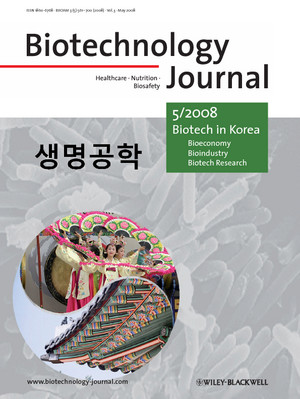 International Science Journal Spotlights Korean Biotechnology
Biotechnology Journal published by German-based Wiley-VCH, one of the world"s major scientific and technical publishers, devoted its entire special edition for May to biotechnology in Korea.
The monthly journal"s special issue was planned by KAIST Professor Sang-Yup Lee of the Chemical and Biomolecular Engineering Department who is one of the journal"s two editors-in-chief.
The special issue outlines the current status and future prospect of biotechnology in Korea, and presents five review papers and eight original papers by leading Korean biotech researchers to showcase recent developments in Korean biotechnology. Among these papers, a review by Dr. Byung-Hwan Hyeon and his colleagues describes in detail the Korean biotechnology strategies represented by "Bio-Vision 2016," and another by Dr. Ji-Hyun Kim and his collaborators presents recent progress in microbial genome projects in Korea.
In the editorial of the journal, Prof. Lee said, "Heavy industry and IT industry have been the two drivers of Korean economic growth. Korea is now considering biotechnology as its next generation growth engine."
Underscoring the growing importance of fusion research, he mentioned that integration of biotechnology with information technology and nanotechnology is advancing rapidly in Korea. Another special edition of Biotechnology Journal focusing on these exciting biotech developments in Korea is planned for the future.
2008.05.20 View 12942
International Science Journal Spotlights Korean Biotechnology
Biotechnology Journal published by German-based Wiley-VCH, one of the world"s major scientific and technical publishers, devoted its entire special edition for May to biotechnology in Korea.
The monthly journal"s special issue was planned by KAIST Professor Sang-Yup Lee of the Chemical and Biomolecular Engineering Department who is one of the journal"s two editors-in-chief.
The special issue outlines the current status and future prospect of biotechnology in Korea, and presents five review papers and eight original papers by leading Korean biotech researchers to showcase recent developments in Korean biotechnology. Among these papers, a review by Dr. Byung-Hwan Hyeon and his colleagues describes in detail the Korean biotechnology strategies represented by "Bio-Vision 2016," and another by Dr. Ji-Hyun Kim and his collaborators presents recent progress in microbial genome projects in Korea.
In the editorial of the journal, Prof. Lee said, "Heavy industry and IT industry have been the two drivers of Korean economic growth. Korea is now considering biotechnology as its next generation growth engine."
Underscoring the growing importance of fusion research, he mentioned that integration of biotechnology with information technology and nanotechnology is advancing rapidly in Korea. Another special edition of Biotechnology Journal focusing on these exciting biotech developments in Korea is planned for the future.
2008.05.20 View 12942 -
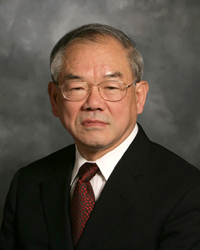 President Suh to Receive Honorary Doctorate from Carnegie Mellon University
Carnegie Mellon University of the United States has decided to present an honorary doctorate degree to KAIST President Nam-Pyo Suh, school authorities said on April 30.
President Suh will receive the honorary degree during the university"s 111th commencement ceremony at its Pittsburgh campus on May 18. Suh earned his Ph.D. in mechanical engineering at Carnegie Mellon in 1964.
Carnegie Mellon University said in a press release that Suh is honored for transforming KAIST into a world-class institution since he became president of KAIST in 2006.
"His distinguished academic career has also included posts at the University of South Carolina and the Massachusetts Institute of Technology, as well as an assistant directorship for the National Science Foundation of the United States. Beyond his academic leadership, Suh invented an industrial process for production of plastic parts that is used in factories worldwide. He holds more than 50 patents and helped start several companies," the press release said.
Five other prominent Americans will also receive honorary doctorate degrees from Carnegie Mellon along with President Suh. They are Al Gore, former U.S. vice president; Norman R. Augustine, former president and CEO of Martin-Marietta and Lockheed Martin and chairman of the American Red Cross; Jeff Bezos, founder of Amazon.com, the world"s largest online retailer; Elizabeth Catlett, an artist and sculptor famed for her dedication to the rights of minorities and women; and Patrick Colonel Suppes, a professor emeritus at Stanford University.
Carnegie Mellon, a leading research university of the United States is known for its distinctive mix of programs in engineering, computer science, robotics, business, public policy, fine arts and the humanities.
2008.04.30 View 12521
President Suh to Receive Honorary Doctorate from Carnegie Mellon University
Carnegie Mellon University of the United States has decided to present an honorary doctorate degree to KAIST President Nam-Pyo Suh, school authorities said on April 30.
President Suh will receive the honorary degree during the university"s 111th commencement ceremony at its Pittsburgh campus on May 18. Suh earned his Ph.D. in mechanical engineering at Carnegie Mellon in 1964.
Carnegie Mellon University said in a press release that Suh is honored for transforming KAIST into a world-class institution since he became president of KAIST in 2006.
"His distinguished academic career has also included posts at the University of South Carolina and the Massachusetts Institute of Technology, as well as an assistant directorship for the National Science Foundation of the United States. Beyond his academic leadership, Suh invented an industrial process for production of plastic parts that is used in factories worldwide. He holds more than 50 patents and helped start several companies," the press release said.
Five other prominent Americans will also receive honorary doctorate degrees from Carnegie Mellon along with President Suh. They are Al Gore, former U.S. vice president; Norman R. Augustine, former president and CEO of Martin-Marietta and Lockheed Martin and chairman of the American Red Cross; Jeff Bezos, founder of Amazon.com, the world"s largest online retailer; Elizabeth Catlett, an artist and sculptor famed for her dedication to the rights of minorities and women; and Patrick Colonel Suppes, a professor emeritus at Stanford University.
Carnegie Mellon, a leading research university of the United States is known for its distinctive mix of programs in engineering, computer science, robotics, business, public policy, fine arts and the humanities.
2008.04.30 View 12521 -
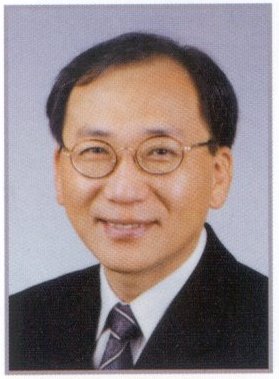 World Micromachine Summit to Open in Daejeon
The 2008 World Micromachine Summit will be held at Hotel Riviera in Daejeon for a four-day run from April 30, drawing worldwide industrial and academic leaders in the micro-nano-technology (MNT).
Organizers say that 76 delegates and 56 observers from 19 countries and regions will take part in this year"s Micromachine Summit. Prof. Cho Young-ho of the Department of Bio & Brain Engineering of KAIST will play host to the annual event.
Participants will discuss the progress of micro-nano-technology in each country and region development of national policies in this area. The Summit was first organized in 1995 by the Micromachine Center of Japan with representatives from 10 countries participating. They were Australia, Canada, Germany, Italy, Japan, the Netherlands, Switzerland, the United Kingdom, and the United States.
Korea was first invited to the conference in 1999. Since then, Korea has played an active role in promoting technological exchanges among nations and has conducted presentations and discussions on major technological breakthroughs.
During the four-day run, each delegation will outline their country"s policies and strategies and present local features on focused areas including this year"s main theme, "Micromachine towards Technology Convergence Era."
The gathering will offer a valuable opportunity for the participants to exchange and collect information on the current state of the MNT, as well as providing a forum for worldwide networking of leaders in the area.
2008.04.29 View 12216
World Micromachine Summit to Open in Daejeon
The 2008 World Micromachine Summit will be held at Hotel Riviera in Daejeon for a four-day run from April 30, drawing worldwide industrial and academic leaders in the micro-nano-technology (MNT).
Organizers say that 76 delegates and 56 observers from 19 countries and regions will take part in this year"s Micromachine Summit. Prof. Cho Young-ho of the Department of Bio & Brain Engineering of KAIST will play host to the annual event.
Participants will discuss the progress of micro-nano-technology in each country and region development of national policies in this area. The Summit was first organized in 1995 by the Micromachine Center of Japan with representatives from 10 countries participating. They were Australia, Canada, Germany, Italy, Japan, the Netherlands, Switzerland, the United Kingdom, and the United States.
Korea was first invited to the conference in 1999. Since then, Korea has played an active role in promoting technological exchanges among nations and has conducted presentations and discussions on major technological breakthroughs.
During the four-day run, each delegation will outline their country"s policies and strategies and present local features on focused areas including this year"s main theme, "Micromachine towards Technology Convergence Era."
The gathering will offer a valuable opportunity for the participants to exchange and collect information on the current state of the MNT, as well as providing a forum for worldwide networking of leaders in the area.
2008.04.29 View 12216 -
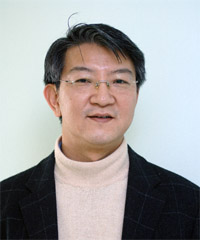 Prof. Sang-Yup Lee Co-Editor-in-Chief of Biotechnology Journal
Prof. Sang-Yup Lee of KAIST"s Department of Chemical and Biomolecular Engineering has been appointed as co-editor-in-chief of Biotechnology Journal published by Wiley-VCH, a German-based leading technical publisher, university authorities said Tuesday, April 15.
Launched in January 2006, Biotechnology Journal has covered biological process, brain ailments, biological medicine, protein design and other applied bio-sciences.
Starting in May, Lee will be responsible for setting and overseeing editorial direction of the journal along with Prof. Alois Jungbauer of Austria.
Professor Lee has been gaining recognition in and outside the country for his research on metabolic engineering. In 2002, he was chosen as one of Asia"s next generation leaders by the World Economic Forum. In 2007, Lee was elected a fellow of the American Association for the Advancement of Science, the world"s largest general scientific society. He is also serving as an editorial member of more than ten international journals including Biotechnology & Bioengineering.
Awards and honors include the First Young Scientist"s Award from the President of Korea, the Scientist of the Month Award from the Korean Ministry of Science and Technology, the Best Patent Award from Korean Intellectual Property Office, the Citation Classic Award from ISI, USA, and the First Elmer Gaden Award (1999 Best Paper Award) from Biotechnology and Bioengineering (John Wiley & Sons, USA) at the ACS National meeting.
2008.04.16 View 12878
Prof. Sang-Yup Lee Co-Editor-in-Chief of Biotechnology Journal
Prof. Sang-Yup Lee of KAIST"s Department of Chemical and Biomolecular Engineering has been appointed as co-editor-in-chief of Biotechnology Journal published by Wiley-VCH, a German-based leading technical publisher, university authorities said Tuesday, April 15.
Launched in January 2006, Biotechnology Journal has covered biological process, brain ailments, biological medicine, protein design and other applied bio-sciences.
Starting in May, Lee will be responsible for setting and overseeing editorial direction of the journal along with Prof. Alois Jungbauer of Austria.
Professor Lee has been gaining recognition in and outside the country for his research on metabolic engineering. In 2002, he was chosen as one of Asia"s next generation leaders by the World Economic Forum. In 2007, Lee was elected a fellow of the American Association for the Advancement of Science, the world"s largest general scientific society. He is also serving as an editorial member of more than ten international journals including Biotechnology & Bioengineering.
Awards and honors include the First Young Scientist"s Award from the President of Korea, the Scientist of the Month Award from the Korean Ministry of Science and Technology, the Best Patent Award from Korean Intellectual Property Office, the Citation Classic Award from ISI, USA, and the First Elmer Gaden Award (1999 Best Paper Award) from Biotechnology and Bioengineering (John Wiley & Sons, USA) at the ACS National meeting.
2008.04.16 View 12878 -
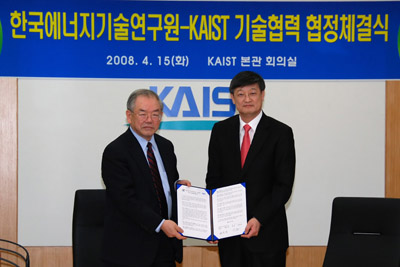 KAIST Inks Agreement with KERI for EEWS Technological Cooperation
KAIST concluded an agreement with the Korea Institute of Energy Research for technological cooperation in the research on the four global issues of energy, environment, water and sustainability (EEWS) on Tuesday (April 15).
The agreement was signed by KAIST President Nam-Pyo Suh and Moon-Hee Han, director of the Korea Institute of Energy Research at the KAIST.
The agreement calls for building a cooperative network for exchanges of personnel and information, and joint use of research facilities and equipment between the two institutions. Under the agreement, KAIST and KIER will also jointly conduct scientific researches.
When it comes to personnel exchange, KAIST will appoint researchers of KIER as adjunct professors of KAIST, while KIER will appoint KAIST professors as its adjunct researchers. Undergraduate students of KAIST will be given an opportunity to join government-commissioned projects and participate in an internship program of the institute.
2008.04.16 View 15192
KAIST Inks Agreement with KERI for EEWS Technological Cooperation
KAIST concluded an agreement with the Korea Institute of Energy Research for technological cooperation in the research on the four global issues of energy, environment, water and sustainability (EEWS) on Tuesday (April 15).
The agreement was signed by KAIST President Nam-Pyo Suh and Moon-Hee Han, director of the Korea Institute of Energy Research at the KAIST.
The agreement calls for building a cooperative network for exchanges of personnel and information, and joint use of research facilities and equipment between the two institutions. Under the agreement, KAIST and KIER will also jointly conduct scientific researches.
When it comes to personnel exchange, KAIST will appoint researchers of KIER as adjunct professors of KAIST, while KIER will appoint KAIST professors as its adjunct researchers. Undergraduate students of KAIST will be given an opportunity to join government-commissioned projects and participate in an internship program of the institute.
2008.04.16 View 15192 -
 KAIST Receiving Applications for Intelligent SoC Robot War
KAIST is receiving applications to participate in the 2008 Intelligent SoC Robot War through the annual contest"s homepage at www.socrobotwar.org. Application deadline is May 1.
The annual contest features battles between mechanical robots utilizing System on Chip (SoC) technology. The annual robot competition, which began in 2002, is scheduled for Oct. 15-19 this year at the Indian Hall of Convention & Exhibition Center (COEX) in southern Seoul.
The Intelligent SoC Robot War Contest has two sections, Tank Robot and Taekwon Robot. In the Tank Robot contest, robots in the form of tanks engage in duels with laser beams through visual recognition, wireless communication, and audio recognition. On the other hand, the Taekwon Robot contest is a hand-to-hand fight. The robots had to be capable of defending, recognizing the opponent, and attacking without external control.
Any team consisting of more than two people and under six undergraduate or graduate students are eligible to take part in the competition.
Prior to the contest, preliminary assessments and the final selection will be made between July and September.
2008.04.14 View 12601
KAIST Receiving Applications for Intelligent SoC Robot War
KAIST is receiving applications to participate in the 2008 Intelligent SoC Robot War through the annual contest"s homepage at www.socrobotwar.org. Application deadline is May 1.
The annual contest features battles between mechanical robots utilizing System on Chip (SoC) technology. The annual robot competition, which began in 2002, is scheduled for Oct. 15-19 this year at the Indian Hall of Convention & Exhibition Center (COEX) in southern Seoul.
The Intelligent SoC Robot War Contest has two sections, Tank Robot and Taekwon Robot. In the Tank Robot contest, robots in the form of tanks engage in duels with laser beams through visual recognition, wireless communication, and audio recognition. On the other hand, the Taekwon Robot contest is a hand-to-hand fight. The robots had to be capable of defending, recognizing the opponent, and attacking without external control.
Any team consisting of more than two people and under six undergraduate or graduate students are eligible to take part in the competition.
Prior to the contest, preliminary assessments and the final selection will be made between July and September.
2008.04.14 View 12601 -
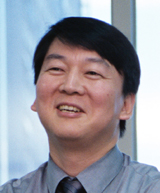 Computer Security Guru Ahn to Become Chair Professor at KAIST
Chul-Soo Ahn, founder of AhnLab Inc., Korea"s largest computer security company, will become a chair professor of KAIST, university authorities said on Monday (April 7).
Ahn, 46, who is currently taking an executive education course at the Wharton School of the University of Pennsylvania in the United States, will start teaching computer science students this fall.
In 1988 when he was a doctorate student at the Medical School of Seoul National University, Ahn developed a computer virus vaccine program and created a sensation in the fledgling computer security market. In 1995, he founded AhnLab and served as CEO for ten years. In 2005, he stepped down as CEO of AhnLab and left for the U.S. Currently, he is serving as chairman of the board of directors of AhnLab. University authorities said that KAIST decided to appoint Ahn as a chair professor in recognition of his profound knowledge in computer technology as well as extensive experiences in corporate management .
2008.04.10 View 11972
Computer Security Guru Ahn to Become Chair Professor at KAIST
Chul-Soo Ahn, founder of AhnLab Inc., Korea"s largest computer security company, will become a chair professor of KAIST, university authorities said on Monday (April 7).
Ahn, 46, who is currently taking an executive education course at the Wharton School of the University of Pennsylvania in the United States, will start teaching computer science students this fall.
In 1988 when he was a doctorate student at the Medical School of Seoul National University, Ahn developed a computer virus vaccine program and created a sensation in the fledgling computer security market. In 1995, he founded AhnLab and served as CEO for ten years. In 2005, he stepped down as CEO of AhnLab and left for the U.S. Currently, he is serving as chairman of the board of directors of AhnLab. University authorities said that KAIST decided to appoint Ahn as a chair professor in recognition of his profound knowledge in computer technology as well as extensive experiences in corporate management .
2008.04.10 View 11972 -
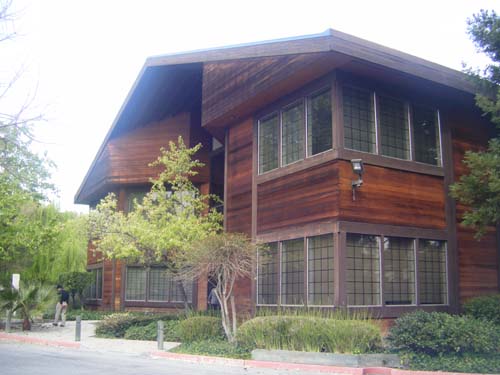 KAIST to Open Liaison Office in Silicon Valley
KAIST will open a liaison office in Silicon Valley, California, within the first half of this year to serve as a beachhead of its operations in the United States, university authorities announced Monday.
The opening of "KAIST America" office will be financially supported by the Silicon Valley-based Ambex Venture Group. The liaison office will be located at the first floor of the AmBex building in Sunnyvale.
The liaison office will be responsible for overseeing joint research between KAIST and the U.S. National Aeronautics and Space Administration (NASA) and KAIST"s other cooperative projects in research and development with enterprises and universities in Silicon Valley. It will also be engaged in forming a network among KAIST alumni members in the United States, raising funds within the U.S. and managing the money. The office will arrange KAIST students" internship in the companies in Silicon Valley.
"KAIST America is part of the globalization strategies that KAIST has pursued consistently. It is aimed at helping set up venture firms based on the technologies that KAIST has developed so far and generating funds needed for further development of the university," said Sun-Heung Jang, KAIST vice president.
AmBex, a venture capital company that invests in information technology, health science and financial service firms, was founded by Jong-Moon Lee, a member of Presidents" Advisory Council at KAIST. The AmBex building is situated near Stanford University, University of California in Berkeley, Google and Yahoo.
KAIST President Nam Pyo Suh will invite Stanford and UC Berkeley professors, executives of Silicon Valley enterprises and KAIST alumni in the area to the opening ceremony of the liaison office to be held some time in the first half of this year.
2008.03.25 View 12498
KAIST to Open Liaison Office in Silicon Valley
KAIST will open a liaison office in Silicon Valley, California, within the first half of this year to serve as a beachhead of its operations in the United States, university authorities announced Monday.
The opening of "KAIST America" office will be financially supported by the Silicon Valley-based Ambex Venture Group. The liaison office will be located at the first floor of the AmBex building in Sunnyvale.
The liaison office will be responsible for overseeing joint research between KAIST and the U.S. National Aeronautics and Space Administration (NASA) and KAIST"s other cooperative projects in research and development with enterprises and universities in Silicon Valley. It will also be engaged in forming a network among KAIST alumni members in the United States, raising funds within the U.S. and managing the money. The office will arrange KAIST students" internship in the companies in Silicon Valley.
"KAIST America is part of the globalization strategies that KAIST has pursued consistently. It is aimed at helping set up venture firms based on the technologies that KAIST has developed so far and generating funds needed for further development of the university," said Sun-Heung Jang, KAIST vice president.
AmBex, a venture capital company that invests in information technology, health science and financial service firms, was founded by Jong-Moon Lee, a member of Presidents" Advisory Council at KAIST. The AmBex building is situated near Stanford University, University of California in Berkeley, Google and Yahoo.
KAIST President Nam Pyo Suh will invite Stanford and UC Berkeley professors, executives of Silicon Valley enterprises and KAIST alumni in the area to the opening ceremony of the liaison office to be held some time in the first half of this year.
2008.03.25 View 12498 -
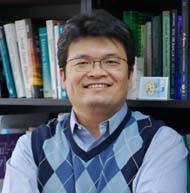 Prof. Kim Receives Lee Osheroff Prize
Professor Eun-Seong Kim of the Department of Physics has been selected as the winner of the Lee Osheroff Richardson Prize for 2008.
The award was established in honor of the 1996 Nobel Prize laureates in Physics David Lee, Douglas Osheroff, and Robert Richardson for their discovery in superfluidity in helium-3. The annual prize sponsored by Oxford Instruments NanoScience is awarded to a young scientist who has made a notable achievement in the field of low temperatures and high magnetic fields.
Kim was chosen as the winner of this prestigious award for his contributions to the understanding of solid helium. Through research, Professor Kim found superfluid-like behavior in solid helium and with this discovery it is shown that all three states of matter can exhibit superfluid behavior.
The Lee Osheroff Richardson Prize recipient is selected by the North American Prize Committee which is composed of prominent figures in the low temperature and high magnetic fields including Professor Bruce Gaulin of McMaster University, who chairs the Prize Committee. The award ceremony was held on March 11 in New Orleans.
2008.03.18 View 12747
Prof. Kim Receives Lee Osheroff Prize
Professor Eun-Seong Kim of the Department of Physics has been selected as the winner of the Lee Osheroff Richardson Prize for 2008.
The award was established in honor of the 1996 Nobel Prize laureates in Physics David Lee, Douglas Osheroff, and Robert Richardson for their discovery in superfluidity in helium-3. The annual prize sponsored by Oxford Instruments NanoScience is awarded to a young scientist who has made a notable achievement in the field of low temperatures and high magnetic fields.
Kim was chosen as the winner of this prestigious award for his contributions to the understanding of solid helium. Through research, Professor Kim found superfluid-like behavior in solid helium and with this discovery it is shown that all three states of matter can exhibit superfluid behavior.
The Lee Osheroff Richardson Prize recipient is selected by the North American Prize Committee which is composed of prominent figures in the low temperature and high magnetic fields including Professor Bruce Gaulin of McMaster University, who chairs the Prize Committee. The award ceremony was held on March 11 in New Orleans.
2008.03.18 View 12747